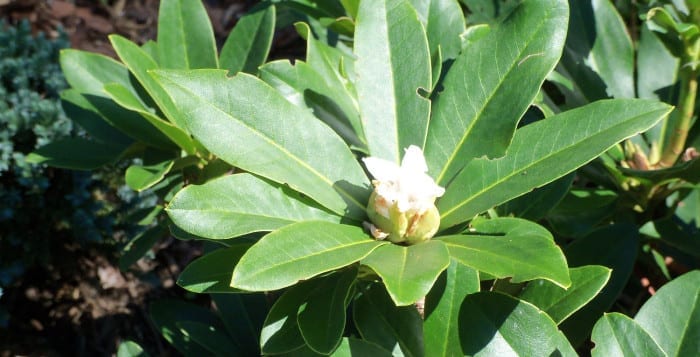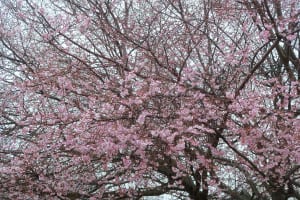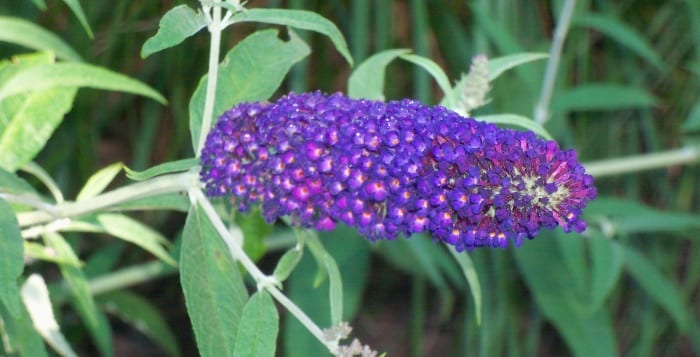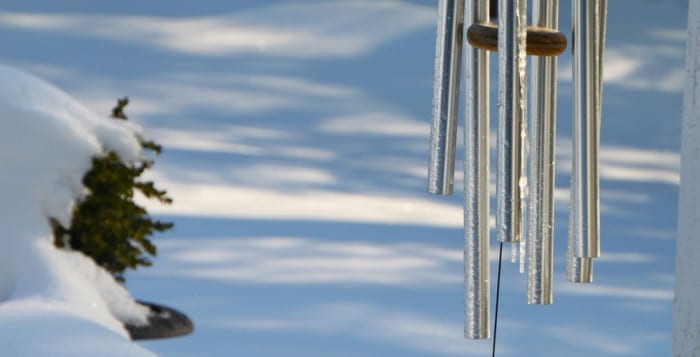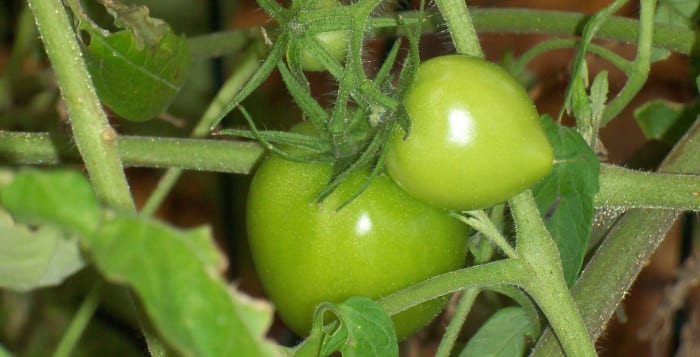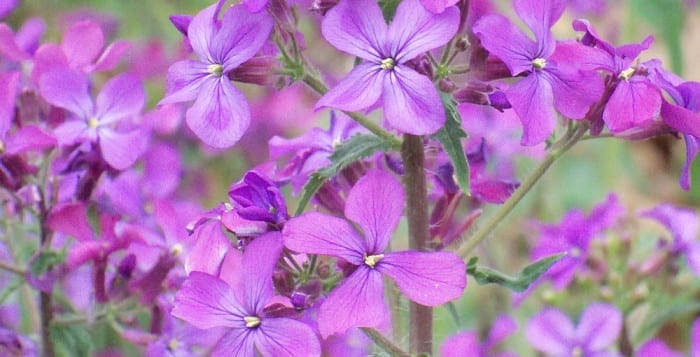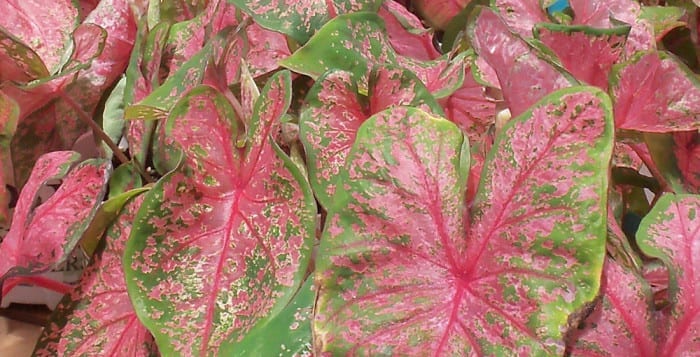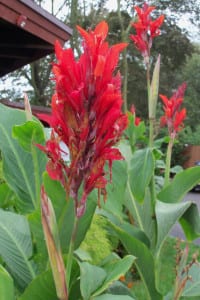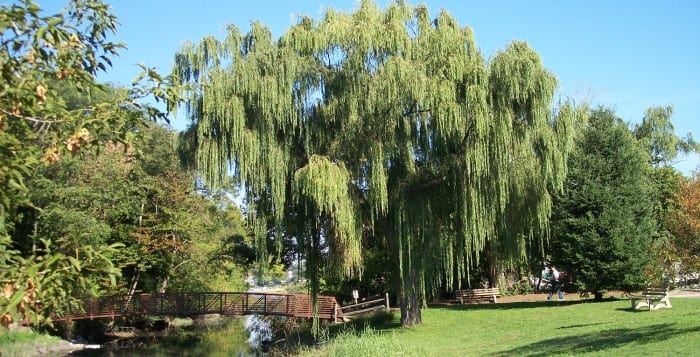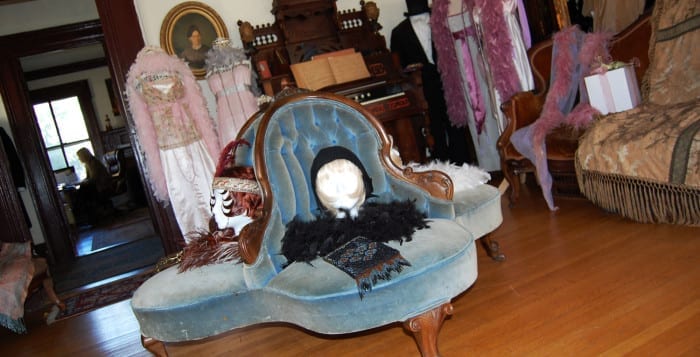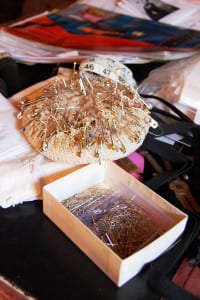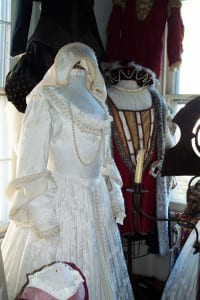By Ellen Barcel
I’ve always thought of salvia as a plant with flaming red flowers. And, it’s true, many varieties of salvia do have red flowers, especially in mid summer. But, there are many, many varieties of salvia, native to both the Old and New World. I’ve seen estimates range from 700 to nearly 1000 different ones and that’s not counting cultivars. Recently, stopping at a local nursery I saw many of these flowers — a truly stunning display. Colors range from burgundy, red and purple to blue. Orange, yellow and near white are rarer but are available.
All varieties of salvia are In the mint family (Lamiaceae). Feel the stem and you’ll find that it is square, like peppermint and spearmint. Also, gently rub or crumple the leaves and you’ll get the distinctive aroma, again like various kinds of mint. Depending on variety, salvia is an annual, biennial, perennial and even a small shrub. Sizes range from 12 to 18 inches up to 5 feet, again, depending on the variety. Always read the tag or plant description in the catalog as this genus is a large one, adapted to many locations. That way you’ll get just what you want for your garden.
Salvia generally grows well in very acidic to alkaline soil, meaning that Long Island gardeners can plant it almost anywhere in the garden however, optimum soil pH is around 5.5 to 6.0.
Salvia splendens
Salvia splendens (scarlet sage) is the variety most commonly grown for summer flowers which are truly spectacular when grown in mass. A tender perennial, it survives winters in USDA hardiness zones 10 to 11 (Long Island is zone 7) so treat it as an annual here.
Salvia officinalis
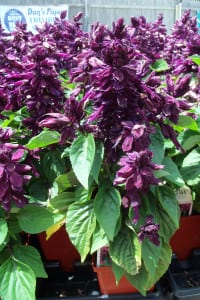
Salvia officinalis is the common variety of sage grown in the herb garden. Like most herbs, it does best in a sunny location, one with good drainage. It is a hardy perennial in USDA zones 5 to 9. Common sage does will in acidic, neutral and mildly alkaline soil. Sage can be propagated from seeds or by stem cuttings.
Harvest the leaves and dry them. Use them as a seasoning for various meat and fish dishes including Thanksgiving stuffing. If you find your plants have an insect infestation, try insecticidal soap. If you use a chemical spray, read the directions carefully as to how close to harvest you can safely apply the product.
Salvia elegans
Salvia elegans, pineapple sage, is one of my favorite plants to grow. It has red flowers in summer and leaves which smell of pineapple. It is an annual here but a perennial in warmer climates (zones 8 to 11). The plant can get very large so give it room to grow. As with most herbs, it does best in a sunny location. It can be propagated by laying a stem down on soil and holding it there with a stone or metal clip. When roots appear, cut if free of the mother plant and pot it up.
Salvia hispanica
I’ve long known that ancient Mesoamericans consumed chia seeds as a staple in their diet. It’s a complete protein, something needed in ancient Mexico, before the introduction by European explorers of cattle. It’s high in fiber, calcium and antioxidants.
What I didn’t know was that chia, a native plant of Mexico, is Salvia hispanica, yes, a member of the salvia family. Today, chia has become a popular “health” food included in some health bars. You can buy chia seeds and incorporate them in baking, much like you do with flax seeds. Some people prefer to sprout the seeds and use them in salads and sandwiches.
And yes, these are the same seeds as in Chia Pets, but don’t eat the seeds/sprouts if you have a Chia Pet as those seeds were not really processed as human food. Edible chia seeds are widely available in health food stores and online. If you try to grow your own, remember that they are native to a fairly arid region, so do not over water.
Salvia divinorum
If you’ve come across information that salvia is an hallucinogen, well that’s only partly correct. The hallucinogenic variety is Salvia divinorum, also known as Diviner’s Sage and Sister Salvia. Suffolk County, has made it illegal to possess or sell Salvia divinorum in the county. So, whatever you find in local nurseries is perfectly legal, and is not hallucinogenic.
Ellen Barcel is a freelance writer and master gardener. Send your gardening questions and/or comments to [email protected]. To reach Cornell Cooperative Extension and its Master Gardener program, call 631-727-7850.


